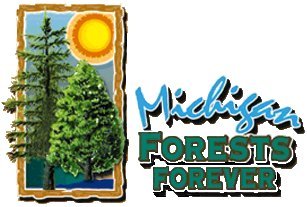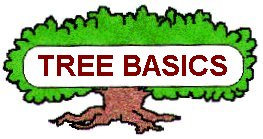

Home Page |
MICHIGAN FORESTS FOREVER TEACHERS GUIDE
| MICHIGAN TREE AND SHRUB SPECIES
98 SPECIES |
 |
These are species you're likely to find in the forests of the Upper Peninsula, not necessarily including all the species grown for ornamentals, street trees, or arboreta. Most were identified by the U.S. Forest Statewide Inventory. The red-lettered species, or at least some species within a genus, are exotics (non-natives).
| CONIFERS OR SOFTWOODS
- 22
DECIDUOUS OR HARDWOODS - 76 Ailanthus, Tree-of-Heaven (Ailanthus altissima) |
Dogwood (Cornus
spp.) |
Tree ID Pages: ID Characteristics, ID Keys, ID Websites, ID Glossary
TAXONOMY OF THE TREES AND SHRUBS OF THE USA
For upper level biology classes interested in the bigger taxonomic picture, this list includes most families which contain tree & shrub species within the USA. Families with representatives in the northeastern USA have common names in (parentheses), but this is not necessarily complete. Some of the families are obscure, monotypic, and/or alien. Some have been commercially introduced from outside the United States. One or two families may have been reclassified or renamed.
All classifications belong to the Division Spermotophyta (seed-bearing, true flowers). The names used for particular botanical classification units vary from source to source. Represented are 2 Classes, 2 Subclasses, 4 Super Orders, 36 Orders, and 113 Families.
Class 1.
GYMNOSPERMAE
Order 1. Ginkgoales
Family 1. Ginkgoaceae (gingko)
Order 2. Coniferales
Family 2.
Cupressaceae (cedar, cypress)
Family 2. Taxaceae (yews)
Family 3. Araucariaceae (araucaria)
Family 4. Pinaceae (pines, larches, spruce, fir, Douglas-fir, hemlock)
Order 3. Gnetales
Family 5. Ephedraceae
Class 2. ANGIOSPERMAE
(flowering plants)
Subclass 1. DICOTYLENDONAE (seeds with two "leaves")
Super Order 1. AMENTIFERAE (catkins)
Order 1. Salicales
Family 6. Salicaceae (willows,
aspen)
Order 2. Garryales
?
Family 7. Garryaceae ?
Order 3. Myricales
Family 8. Myricaceae (waxmyrtle)
Order 4. Leitneriales
Family 9. Leitneriaceae (corkwood)
Order 5. Juglandales
Family 10.
Juglandaceae (butternut, walnut, hickory)
Order 6. Fagales
Family 11.
Betulaceae (birches, alder, ironwood, musclewood)
Family 12.
Fagaceae (oak, beech)
Super Order 2. APETALAE (flowers without petals)
Order 1. Urticales
Family 13.
Ulmaceae (elms, hackberry)
Family 14.
Moraceae (mulberry)
Family 15. Urticaceae (nettles)
Order 2. Santalales
Family 16. Santalaceae (sandal-wood)
Family 17. Loranthaceae (mistletoe)
Order 3. Aristolochiales
Family 18. Aristolochiaceae (birthwort)
Order 4. Polygonales
Family 19. Polygonaceae (smartweed)
Order 5. Centrospermae
Family 20. Chenopodiaceae (goosefoot)
Family 21. Caryophyllaceae (pinks)
Super Order 3. POLYFLORAE (flowers with separate petals)
Order 1. Ranales
Family 22. Ranunculaceae (crowfoot)
Family 23. Lardizabalaceae
Family 24. Sargentodoxaceae
Family 25. Berberidaceae (barberry)
Family 26. Menispermaceae (moonseed)
Family 27. Trochodendraceae
Family 28. Cercidiphyllaceae
Family 29.
Magnoliacae (magnolia, tulip tree)
Family 30. Calycanthaceae
Family 31. Annonaceae
Family 32.
Lauraceae (sassafrass, laurel)
Order 2. Rhoeadales
Family 33. Cruciferae (mustards)
Order 3. Rosiflorae
Family 34. Crassulaceae (orpine)
Family 35. Saxifragaceae (saxifrage)
Family 36. Hamamelidaceae (witch hazel)
Family 37. Eucommiaceae
Family 38.
Platanaceae (sycamore)
Family 39.
Rosaceae (cherries, apples, hawthorne, juneberry, mountain ash, etc.)
Family 40.
Fabaceae (locusts, peas, legumes)
Order 4. Geraniales
Family 41. Zygophyllaceae
(caltrops)
Family 42. Rutaceae (rue)
Family 43.
Simarubaceae
(tree-of-heaven, Quassia)
Family 44. Meliaceae (mahogany)
Family 45. Polygalaceae (milkwort)
Family 46. Euphorbiaceae (spurge)
Order 5. Sapindales
Family 47. Buxaceae
Family 48. Empetraceae (crowberry)
Family 49. Coriariaceae ??
Family 50. Anacardiaceae (sumac)
Family 51. Cyrillaceae
Family 52. Aquifoliaceae (holly)
Family 53.
Celastraceae (bittersweet)
Family 54. Staphyleaceae (bladder-nut)
Family 55.
Aceraceae (maples)
Family 56.
Hippocastanaceae (horse-chestnut)
Family 57. Sapindaceae (soapberry)
Family 58. Sabiaceae
Order 6. Rhamnales
Family 59.
Rhamnaceae (buckthorn)
Family 60. Vitaceae (grape)
Order 7. Mavales
Family 61.
Tiliaceae (basswood)
Family 62. Malvaceae (mallow)
Family 63. Sterculiaceae
Order 8. Parietales
Family 64. Actinidiaceae
Family 65. Eucryphiaceae
Family 66. Theaceae (tea)
Family 67. Hypericaceae (St. Johnswort)
Family 68. Tamaricaceae (tamarisk)
Family 69. Cistaceae (rockrose)
Family 70. Violaceae (violet)
Family 71. Flacourtiaceae
Family 72. Stachyuraceae
Order 9. Opuntiales
Family 73. Cactaceae (cacti)
Order
10. Myrtiflorae
Family 74. Thymelaeaceae (leatherwood)
Family 75. Elaeagnaceae (Russian olive)
Family 76. Lythraceae (loosestrife)
Family 77. Punicaceae (pomegranate)
Family 78.
Nyssaceae (tupelo)
Family 79. Alangiaceae
Family 80. Myrtaceae (myrtle)
Family 81. Onagraceae (evening primrose)
Order
11. Umbelliflorae
Family 82. Araliacae (ginseng)
Family 83. Umbelliferae (parsley)
Family 84.
Cornaceae (dogwood)
Super Order 4. SYMPETALAE
(flowers with joined petals)
Order 1. Ericales
Family 85. Clethraceae (white alder)
Family 86. Pyrolaceae (wintergreen)
Family 87. Ericaceae (blueberry)
Family 88. Diapensiaceae
Order 2. Primulales
Family 89. Myrsinaceae ?
Order 3. Plumbaginales
Family 90. Plumbaginaceae ?
Order 4. Ebenales
Family 91. Sapotaceae
Family 92. Ebenaceae (persimmon)
Family 93. Symplocaceae (sweet-leaf)
Family 94. Styracaceae (snowbell)
Order 5. Contortae
Family 95.
Oleaceae (ash, lilac)
Family 96. Loganiaceae
Family 97. Apocynaceae (dogbane)
Family 98. Ascelpiadaceae (milkweed)
Order 6. Tubiflorae
Family 99. Polemoniaceae (phlox)
Family 100. Boraginaceae (borage)
Family 101. Verbenaceae (vervain)
Family 102. Labiatae (mint)
Family 103. Solanaceae (nightshade)
Family 104. Scrophulariaceae (figwort)
Family 105.
Bignoniaceae (catalpa)
Family 106. Globulariaceaa ?
Order 7. Plantaginales
Family 107. Plantaginaceae (plantain)
Order 8. Rubiales
Family 108. Rubiaceae (madder)
Family 109.
Caprifoliaceae (elderberry, honeysuckle)
Family 110. Dipsacaceae (teasel)
Order 9. Campanulatae
Family 111. Compositae (composites)
Subclass 2. MONOCOTYLEDONAE
(seeds with one "leave")
Order 1. Glumflorae
Family 112. Gramineae (grasses)
Order 2. Liliiflorae
Family 113. Liliaceae (lilies)
Source: Rehder, 1940. Manual of
Cultivated Trees and Shrubs.
Cross-checked with Gleason & Cronquist (1963) and Harlow & Harrar (1968).
Tree ID Pages: ID Characteristics, ID Keys, ID Websites, ID Glossary
 |
This website was developed and created by Michigan State University Extension for the teachers of the State of Michigan. |
Page Name:
TreeBasics/TreeIDspplist.htm